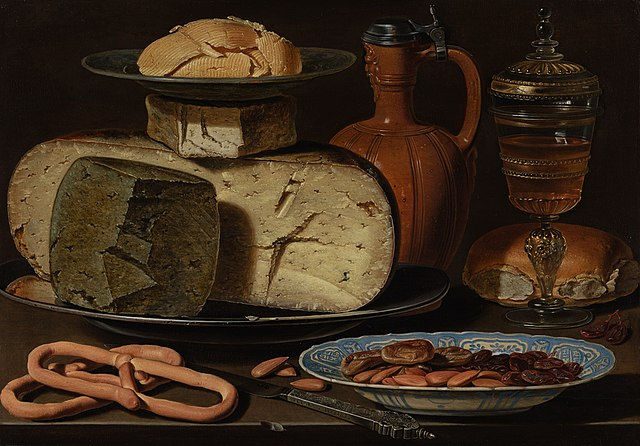Hidden Self-Portraits
- Tatyana
- Oct 2, 2021
- 4 min read
Updated: Dec 19, 2022
Have you spotted these hidden self-portraits?
Over the ages, portraits and self-portraits have always been a significant genre in the History of Art. However, did you know that over the years, some artists have enjoyed painting hidden self-portraits of themselves in their artworks?
These secret self-portraits come in all shapes and sizes, and some are undoubtedly more noticeable than others.
For example, in The School of Athens (1509-1511), the Renaissance artist Raphael Sanzio painted himself peeking out from behind the arch on the far right of the fresco, nestled between the figures of Ptolemy and Zoroaster. He is one of the only figures of the painting who stares directly outwards at the viewer as if challenging us to find him amongst the crowd.


This kind of hidden self-portrait was quite typical of Early Italian Renaissance artists who were looking for a way to display their renewed status’ as important humanists and artists. For the first time, were given a sense of creative freedom and artistic independence. You might see other artists of the time similarly painting themselves to the right of paintings or altarpieces, looking straight out at the viewer. In this painting, Raphael is placing himself alongside an extensive medley of important philosophical figures, some presented in the guise of his contemporaries. Leonardo da Vinci, for example, is meant to be an embodiment of Plato.

Other artists following Raphael have gotten a little more creative, painting self-portraits of themselves in the guise of different characters.
In The Last Judgment in the Sistine Chapel (1536-1541), Michelangelo shockingly painted himself as the flayed human skin of a martyred saint, held by Saint Bartholomew, right in the middle of the expansive painting. Michelangelo famously hated the experience of painting the Sistine Chapel ceiling in the Vatican; he found the long hours of straining his neck while painting the ceiling to be arduous and painful. Could this be a visual encapsulation of his frustration and exhaustion at having finally completed the commission?


Caravaggio did something similar in his painting David with the Head of Goliath (1609-1610) when he painted himself not as the young, victorious David, but as the defeated and decapitated giant Goliath.


Stranger still, Paul Gaugin painted himself as the creepy clown doll to the right of a young boy in his Sleeping Baby, Étude of 1881.


Were these artists doing this as a form of creative expression? Or were they simply trying to have a little fun? That is up to you to decide…
Now artists of the Northern Renaissance have taken a different approach, populating their still lives with self-portraits that are far less noticeable, and therefore all the more rewarding to discover…

Jan Van Eyck is famous for his expert depictions of textures and surface reflections. Indeed, in The Arnolfini Portrait (1434), a highly symbolic, allegorical, and enigmatic painting, he uses the small mirror between the two figures as a way to break the fourth wall. If you look closely, you will notice that the mirror reflects two more figures who appear to be standing in the room; one of whom is holding a paintbrush.
Jan van Eyck has painted himself standing before the two protagonists, in the very act of painting them. The Latin script above the painting confirms this sneaky reflection of himself as the artist, perhaps accompanied by his assistant, as the words translate to: “Jan van Eyck was here.”

Jan van Eyck is one of many Northern Renaissance artists who played with reflective surfaces in their oil paintings in a way that both showed off their technical skill and allowed them to insert their own presence into their works. But my favorite artist by far, who really mastered-this-trend if you will, is the Flemish artist Clara Peeters. Clara is known as being one of the most talented still-life artists of the early 17th century; she produced realistic still-life paintings featuring meticulously painted food items, cutlery, and goblets. While most Northern Renaissance artists typically populated their still lives with lavish and rare food items and glistening jewels and cutlery, Clara focused on more rural, humble, and simple food items. What many failed to notice, however, was an added hidden self-portrait in many of her paintings.

In her painting Still Life with Flowers, Gilt Goblets, Coins, and Shells (1612), with a careful eye you can spot six self-portraits reflected off of the circles of the goblet on the right side of the painting. In each of the reflections, Clara is shown holding a paintbrush and palette, in other words, in the act of painting.

She does something similar in her painting Still Life with Cheeses, Almonds, and Pretzels (1615). In this case, she is shown reflected in the ceramic jug’s brim and lid, fascinatingly and precisely distorted in line with the object’s curve. Clara added a second and more conventional written signature that looks as if it has been carved on the edge of the foreshortened butter knife.


Should these self-portraits be seen as a creative signature? A mode of expression? A playful tease? Or a safe way of ensuring authorship?
I see them as a combination of all four. And more so, by stealthily including their own faces in their paintings, these artists have immortalized their own presences in their works of art, ensuring that we will never forget their hand or importance in the creative process.
Once you find these hidden self-portraits, you realize how much these artists truly wanted to be seen.

Comments